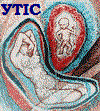
|
|
|
|
|
Infant Mortality - Ukraine vs. Alabama
Hryhoriy Vashchylin, M.D. 5, Hryhoriy Trotskyy, M.D. 1, Nataliya Zymak-Zakutnya, M.D. 6
1 Ukraine OMNI-Net and Lviv National Medical University
2 Alabama Department of Public Health, Division of Statistical Analysis
3 Rivne OMNI-Net and Regional Children's Hospital
4 Rivne OMNI-Net and Regional Diagnostic Center
5 Volyn OMNI-Net and Regional Children's Territorial Medical Center
6 Khlmenytsky OMNI-Net and City Perinatal Center
Background: In Ukraine, vital statistics are reported by local authorities in aggregate form and reflecting former U.S.S.R. definitions only recently updated to comply with those used by the international health community. The OMNI-Net established a neonatal registry concurrently with a birth defects surveillance system, both relying on international standards.
Method: To assess infant mortality and its causes, we compared 2006 data from three oblasts: provinces of Rivne, Volyn and Khmelnytsky, on 41826 live births. Data on 40895 white infants born in Alabama in 2005 were used for comparisons. In addition, a separate concurrent review of causes of infant deaths in Rivne was undertaken.
Results: We focus upon infants of near normal birth weight and gestation because they are most numerous in terms of infant mortality. Live born weighing from 2500 to 4499 g. represented 94.3% and 90.3% for Ukrainian and Alabama infants respectively; birth weight for those gestated less than 38 weeks and those gestated 38 or more weeks were 7.8% vs. 22.1% and 92.12% vs. 77.7% for Ukraine and Alabama respectively. Infant mortality among those with birth weights above 1999 g. was 0.74% (includes 185 infants weighing between 2500 and 3500 g.) and 0.5% (includes 67 infants weighing between 2500 and 3500 g.) for Ukraine and Alabama respectively. Review of medical records in Rivne showed that birth defects, mainly cardiac malformations, were the leading cause of infant mortality, followed by infections, asphyxia and hemorrhage. The reviewers gained the impression that the latter causes of death were more prevalent in the 2500 to 3500 g. group.
Conclusion: The review team will expand the study of death records in other OMNI-Net regions. Conclusions and recommendations will be forwarded to city, region and national authorities to reduce mortality and morbidity particularly that of infants with near-normal gestational ages and near-normal birth weights (the most numerous category).
See:






